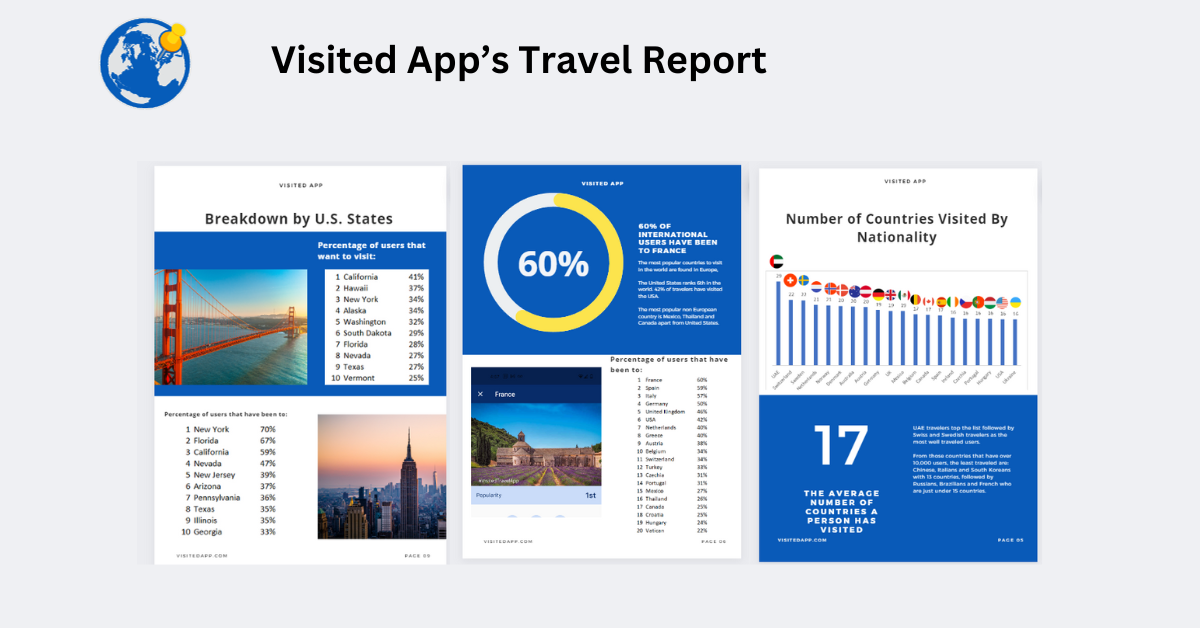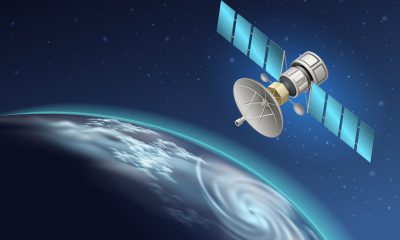Travel
Hitting the Aussie Highway on a Road Trip?

Embarking on an Aussie Road trip is an adventure like no other.
It’s a chance to explore the vast landscapes, discover hidden gems, and create unforgettable memories along the way.
Road tripping in Australia is more than just reaching your destination. It’s about the unique experiences and cherished moments you encounter along the way.
No matter if you’re cruising down the mesmerising coastal highways or navigating the untamed wilderness of the Outback, make sure to pause and immerse yourself in the awe-inspiring panoramas that showcase the captivating beauty and rich variety of the Australian terrain.
This is what Australia is famous for, its natural beauty, making it an ideal destination for a road trip adventure during the upcoming school break.
Before you set off on your road trip, here are some tips to keep in mind as it’s important to prioritise safety as well to ensure a smooth journey.
Don’t forget to map out your route and schedule.
This will not only guarantee that you fully enjoy your adventure but also keep you prepared and organised for any unforeseen surprises.
Research the Roads
Start by researching the roads and highways that you will be taking.
Look for information on the driving conditions, speed limits, and any potential road closures or construction.
This will give you a clear understanding of what to expect and allow you to plan your travel time accordingly.
Explore Attractions
While planning, take some time to research the attractions and points of interest along your route.
This includes scenic viewpoints, historical landmarks, national parks, or quirky roadside attractions. Make a list of the ones that interest you the most and plan your itinerary accordingly.
Consider Distances
Consider the distances between the places you want to visit. Think about how you’re comfortable driving each day and plan your stops accordingly.
Find a balance, between enjoying the trip and reaching your destination.
Rest Stops
Remember to factor in rest stops along the way to ensure that you and your family are well-rested and refreshed.
Look for suitable places to take breaks, such as picnic spots, rest areas, or points of interest that offer facilities and amenities.
Should I be flexible when making my plans?
When making plans for your trip, it’s important to keep some flexibility.
Make sure you have time for detours or to spend extra time at a place that catches your interest. Being open to change allows you to fully embrace the unexpected and make the most out of your road trip adventure.
By planning your route and itinerary, you guarantee a pleasant road trip experience.
Always double check for any updated information before embarking on your journey. Remain open, to the experiences that await you along the way.
Is my vehicle in good condition?
Taking the time to check your vehicle before your journey can help prevent any unexpected breakdowns and ensure a smooth and safe trip.
Here are some essential steps to follow when inspecting your vehicle:
Tires
Start by inspecting the condition of your tires.
Check for any signs of wear and tear, such as balding or uneven tread wear.
Do you have sufficient tire tread for proper traction, especially during wet or slippery conditions?
Additionally, make sure that the tire pressure is within the manufacturer’s recommended range.
Brakes
Take the time to check that your brakes are working correctly by testing them in a safe and controlled environment.
Listen for any unusual noises or vibrations and ensure that your brake pads and rotors are in good condition.
If you notice any issues, have your brakes inspected and serviced by a professional mechanic.
Lights
An often-overlooked aspect of any vehicle maintenance is checking your lights.
Ensure that all your headlights, taillights, brake lights, and turn signals are functioning correctly.
Fluid Levels
Check the levels of essential fluids in your vehicle, including engine oil, brake fluid, coolant, and windshield washer fluid.
Low levels of these fluids can cause issues with your vehicle’s performance and potentially lead to breakdowns.
If any of the fluid levels are low, top them up to the recommended levels.
Spare Tire, Jack, and Tools
Is your spare tire properly inflated and in good condition?
Familiarise yourself with how to use the jack and the tools required to change a tire.
Always have extra tools like a flashlight, jumper cables, and a wrench set for any unforeseen circumstances.
Regular Maintenance and Servicing
Follow the manufacturer’s recommended maintenance schedule and have your vehicle serviced by a certified mechanic regularly.
Routine maintenance prevents potential issues from arising and helps identify any underlying problems before they become more significant and costly.
Checking your vehicle before a trip will give you peace of mind, knowing you’ve taken steps to ensure your safety on the road.
Be Prepared for Different Weather Conditions
Australia is a country known for its diverse weather conditions.
From scorching heat to heavy rain and even occasional snow, the weather can vary greatly depending on the region and season.
When planning a road trip within Australia, be prepared for these weather changes to ensure a comfortable and enjoyable experience.
Make sure to pack a mix of light and breathable clothes for the hot summer months, as well as warm and waterproof clothing for the colder seasons.
It’s also recommended to bring a variety of layers that can be easily added or removed as the temperature fluctuates.
Additionally, protecting yourself from the sun is essential due to the harsh Australian climate.
Pack sunscreen with a high SPF, wide-brimmed hats, and sunglasses to shield yourself from harmful UV rays.
Remember to reapply sunscreen regularly, especially if you plan on spending more time outdoors.
Having a rain gear is essential as Australia experiences periods of heavy rainfall, particularly in tropical regions.
Umbrellas and waterproof jackets will come in handy during unexpected downpours and will ensure you stay dry and comfortable.
To stay well-informed about the weather conditions throughout your trip, regularly check weather forecasts.
You can do this through various weather apps, websites, or by tuning in to local news channels.
Adhere to Speed Limits and Road Rules for a Safe Journey
Australia boasts well-regulated and maintained roadways, making it essential to adhere to speed limits and other road rules.
One of the primary factors contributing to road accidents is speeding.
Exceeding the specified speed limit not only compromises your safety but also endangers the lives of other road users.
Remember, speed limits are set for a reason – to maintain a balance between efficient travel and safety. So, always drive within the designated speed limits.
Each Australian state may have slight variations in their road rules, so be well-informed.
Look out for road signs indicating speed limits, pedestrian crossings, give way rules, and any other guidelines essential for safe driving.
Remember, a few extra minutes on the road is a small price to pay for the well-being and safety of yourself and others. T’s
Stay Hydrated and Carry Snacks
When going on long drives in Australia, it’s important to make sure you stay hydrated and energized. Sitting for a time and focusing on driving can make you feel tired. Take proactive steps to stay refreshed and avoid any moments of drowsiness.
One of the simplest and most effective ways to stay hydrated during long drives is to carry plenty of water with you.
Make sure to pack an adequate supply of water bottles or a reusable water container that you can refill along the way. It’s recommended to drink at least eight ounces of water every hour to maintain hydration levels. Not only will this quench your thirst, but it will also help keep you focused and prevent headaches or dizziness that can result from dehydration.
In addition to water, pack some healthy snacks for your journey.
Choose snacks that are easy to eat while driving and provide a good balance of nutrients to sustain your energy levels.
Some examples include fresh fruit, granola bars, trail mix, or carrot sticks.
Avoid snacks that are high in sugar or excessive caffeine, as these can lead to dehydration or energy crashes in the long run.
Here are some tips for staying hydrated and carrying snacks during long drives:
- Plan and pack enough water to last the entire trip.
- Choose snacks that do not require refrigeration.
- Pre-portion your snacks into individual servings for easy grab-and-go.
- If you prefer caffeinated drinks, opt for a moderate amount and balance it with water intake.
- Take breaks every couple of hours to stretch your legs, use restroom facilities, and refill your water bottle if needed.
Emergency contacts
Before your road trip, ensure you have emergency contacts saved. Local emergency services should also be at the top of your list.
Research and note down the emergency hotline numbers of the areas you will be visiting during your road trip.
This includes police, fire department, and ambulance services. In case of any emergencies, you can quickly reach out to the appropriate authorities.
No one wants to experience a breakdown or any mechanical issues during a road trip, but it’s always wise to be prepared for such situations.
Before embarking on your trip, find out the contact information for roadside assistance in the areas you’ll be travelling through.
They can come to your aid if you have a flat tire, run out of fuel, or face any other roadside emergencies.
In addition to roadside assistance, make sure you have the details of your travel insurance provider handy.
Accidents can happen, and having insurance coverage will provide an added layer of protection.
Check your policy to understand the coverage and make a note of the emergency hotline for your insurance provider.
Remember, emergencies can occur at any time, so have all the necessary information easily accessible.
Store the emergency contact numbers in your phone under a contact name like “Emergency” to make it easy to find.
Additionally, create a physical copy of the emergency contact list and keep it in your glove compartment.
Respect Wildlife and Nature in Australia
When embarking on a road trip through this beautiful country, show respect for the environment, ensuring its preservation for future generations.
One of the first steps in demonstrating this respect is by refraining from littering.
As you journey through Australia’s vast and diverse landscapes, make a conscious effort to dispose of waste responsibly.
Keep a small trash bag in your vehicle to collect any rubbish and dispose of it in designated bins when available.
In addition to avoiding littering, avoid causing any harm to animals.
Australia is home to a wide range of unique wildlife, from kangaroos and koalas to dingoes and emus. When encountering these creatures, whether along the roadside or in their natural habitats, observe them from a safe distance.
Wildlife Etiquette
Respecting the personal space of wildlife helps minimise stress for the animals and prevents potential injuries or accidents.
Remember, these creatures are not accustomed to human interaction, and it’s in their best interest to let them carry on with their natural behaviours undisturbed.
When visiting national parks or protected areas, be sure to follow any guidelines or restrictions in place.
These guidelines aim to protect both the wildlife and the natural environment. Some areas may have specific rules, such as not feeding the animals or staying on designated paths.
Australia’s flora and fauna are part of what makes it an extraordinary destination.
Show your appreciation by being a responsible traveller and leaving only footprints behind.
Stay Connected and Share Your Itinerary
By sharing your itinerary, you make sure that someone knows your whereabouts and can assist you if needed.
To make sure you stay connected, here are a few tips:
Share your itinerary: Include information such as your route, accommodation details, and estimated time of arrival at each destination. This way, they will have a clear picture of where you are always.
Regularly update your contacts: This will help them track your progress and ensure that they are always aware of your current situation.
Tracking Apps: GPS trackers, messaging apps, or even social media platforms to provide real-time updates to your loved ones. These tools can not only keep them informed but also allow them to reach out to you if necessary.
Travel
Visited App Reveals Top 25 Global Wonders Rankings

The travel app Visited, which was developed by Arriving In High Heels Corporation, has published a list of the top 25 most visited World Wonders. World Wonders can be found around the world, and include natural wonders such as the Grand Canyon ranked 12th or man-made such as the Eiffel Tower which is the most visited wonder in the world. Big Ben is found in the 7th spot, while driving distance Stonehenge comes in the 18th spot, and the unique ride between England and France, the Channel Tunnel, comes in the 23rd spot. Europe, followed by the United States have the highest number of visited wonders, which is not surprising as they are high on every traveler’s wish list. While the majority of World Wonders are found in Europe, a few exceptions include: Sydney Opera House, Chichen Itza, Marrakesh and the Great Wall of China.
The top 5 most visited World Wonders include: the Eiffel Tower, the Colosseum, Venice, La Sagrada Familia, and the Empire State Building.
The list is based on over 2,000,000 users who are avid travelers, that use the travel app, Visited. The app allows users to mark off famous places based on travel lists including most visited beaches, churches, opera houses, golf destinations, cruise ports and others. Other features of the app include: personalized travel map of where you have been or wish to visit, and travel stats and itinerary which ranks your top destinations based on your bucket list.
Travel
Live and Work on Mars? NASA’s Seeking Applicants

NASA’s crew criteria
A series of Mars simulations
Travel
Emirates Expands Services in Australia with Second Daily Flight to Perth

Emirates will ramp up its operations in Australia by upgrading its second daily flight between Dubai and Brisbane to an A380 starting from October 1.
The airline will also add a second daily service between Dubai and Perth operated by a Boeing 777-300ER starting from 1 December.
From 1 October, Emirates’ second A380 flight EK430 to Brisbane will depart Dubai at 0230hrs, arriving in Brisbane at 2220hrs. Emirates’ return flight EK431 will depart Brisbane at 0155hrs, arriving in Dubai at 1005hrs. All times are local.
The additional flight to Perth will be operated by an Emirates Boeing 777-300ER. Starting from 1 December, Emirates flight EK424 will depart from Dubai at 0915hrs and arrives in Perth at 0005hrs the following day. Emirates’ return flight EK425 will depart from Perth at 0600hrs and arrives in Dubai at 1310hrs. All times are local.
Barry Brown, divisional vice president Australasia at Emirates, said: “We’re pleased to offer more choice and opportunities for Australians traveling from Brisbane and Perth through the ramp up of our operations. It’s a demonstration of the importance of both gateways for tourism and trade, and Emirates’ commitment to ensure convenient schedules and comfortable connections to and through Dubai. Whether it’s the advantage of seamless afternoon connections from Dubai to a wealth of destinations across Europe on the second Perth flight, or a full A380 experience to and from Brisbane to close to 50 cities served by our flagship, we’re creating access to diverse opportunities for business, leisure, culture, and more.
“The ramp up is also a testament to our commitment in enhancing global connectivity to our Australian gateways and supporting tourism and trade growth opportunities.”
Gert-Jan de Graaff, Brisbane Airport chief executive officer, said: “The A380 will allow up to 100,000 extra passengers per year to travel between Queensland and Europe, which is Brisbane’s second busiest international destination. Now in its 21st year of serving Brisbane, Emirates is our number one mover of people to and from Europe.
“Importantly, Emirates stands out from the pack as the leading airline in over the bay operations, reducing noise impacts on the local community. More than two-thirds of all overnight Emirates flights have been over Moreton Bay during the period from July to December 2023. We congratulate Emirates on that performance and look forward to continued collaboration across all airlines.
-
Business2 years ago
How to Earn Money Writing Blog Posts in 2023: A Comprehensive Guide
-
Games2 years ago
How does Dead Space Remake enhance the Horror Classic of 2008
-
Video2 years ago
Everything you need to know about Starfield
-
Health2 years ago
How is Yoga and Pilates Bridging the Gap Between your Mind and Body
-
Health2 years ago
Migraine medications significantly improve the quality of life
-
World2 years ago
Swiss Pharma Powerhouse Acino Expands into Latin America with M8 Pharmaceuticals Acquisition
-
Self Improvement2 years ago
Enhancing Relationships and Emotional Intelligence Through Mindfulness Meditation
-
Business2 years ago
How to Use LinkedIn to Build Your Professional Brand












































Pingback: Bucket-List Alert: These 5 Australian Camping Spots Will Leave You Speechless